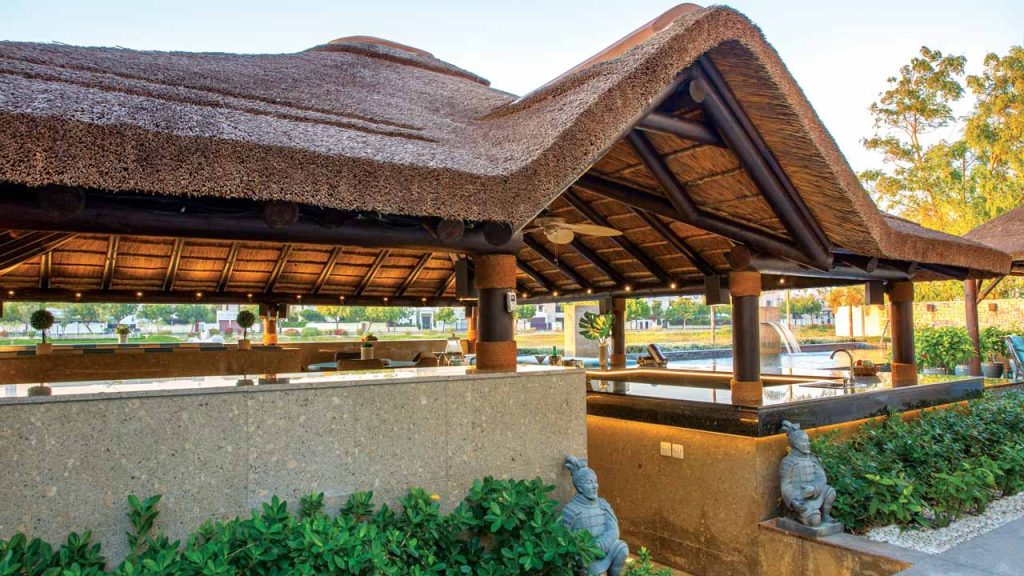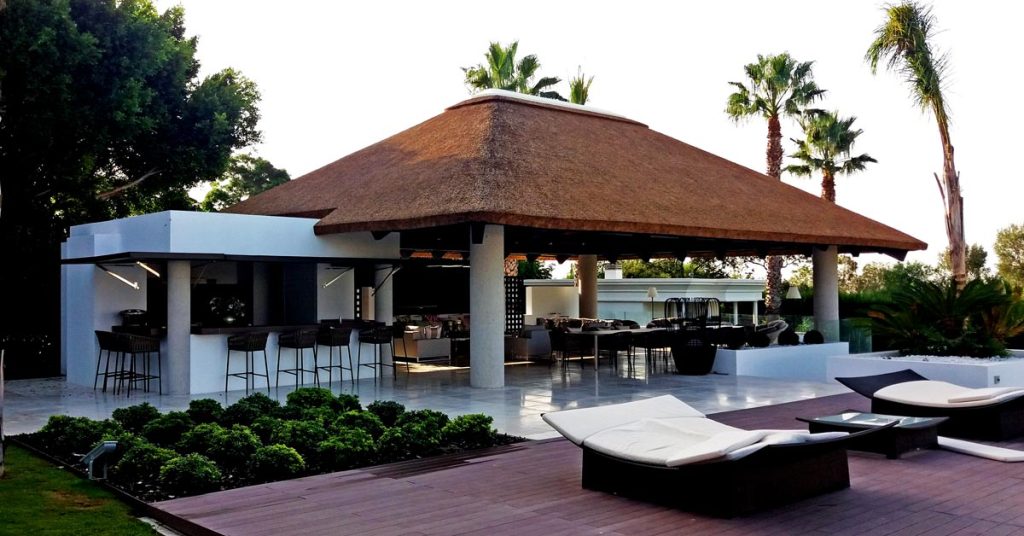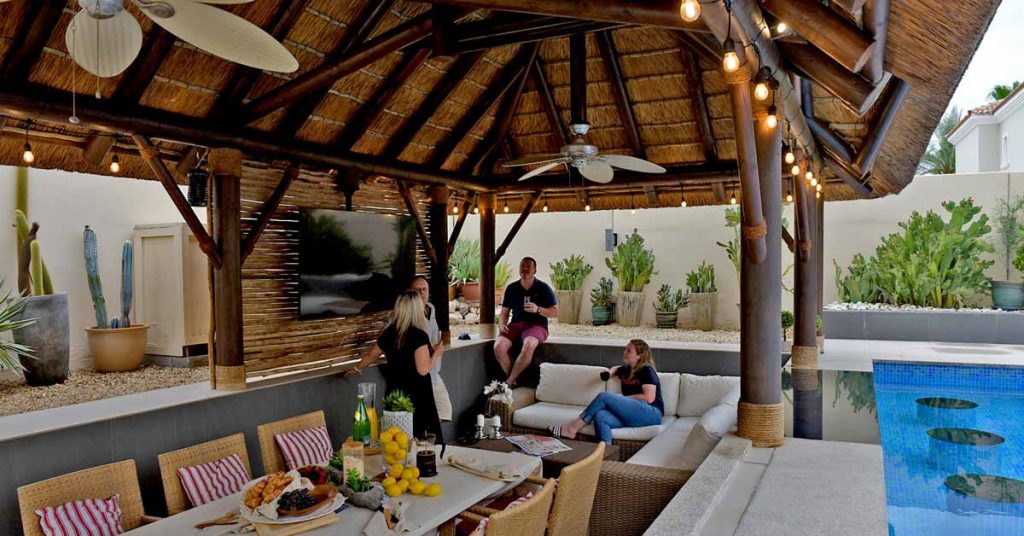Your basket is currently empty!

Adding a gazebo with Cape Reed straw thatch roofing
Adding a thatched roof gazebo to your garden is a stylish way to get more use out of your outdoor space and it can also substantially increase the value of your property. A stylish garden structure not only looks great, it creates a centrepiece for the garden and the thatch roofing provides shade and a touch of natural style. A gazebo is extremely versatile and can be used for relaxation, leisure, entertaining, dining, yoga, and much more.

What Is Cape Reed Thatch Roofing
Cape Reed thatch roofing is made from the Thamnochortus insignis plant, native to South Africa. Known for its durability and natural beauty, Cape Reed straw is an excellent material for thatch roofing. It offers excellent insulation, keeping the gazebo cool in summer and warm in winter. The natural properties of Cape Reed make it resistant to pests and decay, ensuring a long-lasting and low-maintenance roof for your gazebo.

Benefits Of A Thatched Roof Gazebo
1. Aesthetic Appeal
A thatched roof gazebo adds a rustic and natural charm to any garden. The organic look of the straw complements various garden styles, from modern minimalist to traditional English gardens.
2. Environmental Friendliness
Cape Reed thatch is a sustainable and eco-friendly material. The harvesting and production processes have minimal impact on the environment, making it an excellent choice for environmentally conscious homeowners.
3. Durability and Longevity
Cape Reed thatch is known for its durability. With proper care, a thatched roof can last up to 50 years. The natural oils in the reed make it resistant to water and pests, ensuring your gazebo remains beautiful and functional for decades.
4. Insulation Properties
The thick layer of thatch provides excellent insulation, keeping the interior of the gazebo cool during hot summer days and warm during cooler months. This makes the gazebo a comfortable retreat all year round.
5. Versatility
A thatched roof gazebo is incredibly versatile. It can be used as an outdoor dining area, a relaxation spot, a yoga studio, or even a place for entertaining guests. The possibilities are endless, making it a valuable addition to any garden.

Conclusion
Adding a thatched roof gazebo with Cape Reed straw to your garden is a fantastic way to enhance your outdoor space. Not only does it provide a beautiful focal point, but it also offers a versatile and comfortable area for various activities. With its aesthetic appeal, environmental benefits, and durability, a thatched gazebo is a worthwhile investment for any homeowner. By carefully planning the installation and maintaining the thatch, you can enjoy your gazebo for many years to come. So, take the plunge and transform your garden with a stunning thatched roof gazebo today!

FAQs
What is Cape Reed thatch roofing made from?
Cape Reed thatch roofing is made from the Thamnochortus insignis plant, which is native to South Africa. This material is known for its durability and natural beauty, making it an excellent choice for thatch roofing.
What are the benefits of a thatched roof gazebo?
Aesthetic Appeal: It adds a rustic and natural charm to any garden.
Environmental Friendliness: Cape Reed thatch is a sustainable and eco-friendly material.
Durability and Longevity: With proper care, a thatched roof can last up to 50 years.
Insulation Properties: It provides excellent insulation, keeping the interior cool in summer and warm in winter.
Versatility: It can be used for various purposes, such as dining, relaxation, yoga, and entertaining.
How long does a thatched roof made from Cape Reed typically last?
With proper care and maintenance, a thatched roof made from Cape Reed can last up to 50 years. The natural oils in the reed make it resistant to water and pests, contributing to its longevity.
How does a thatched roof gazebo enhance the value of a property?
A thatched roof gazebo can substantially increase the value of a property by adding a stylish and functional outdoor space. It creates a beautiful focal point in the garden and provides a versatile area for various activities, making the property more attractive to potential buyers.
What are the environmental benefits of using Cape Reed thatch for roofing?
Cape Reed thatch is a sustainable and eco-friendly material. The harvesting and production processes have minimal impact on the environment, making it an excellent choice for environmentally conscious homeowners. Additionally, the natural properties of Cape Reed make it resistant to pests and decay, reducing the need for chemical treatments.

